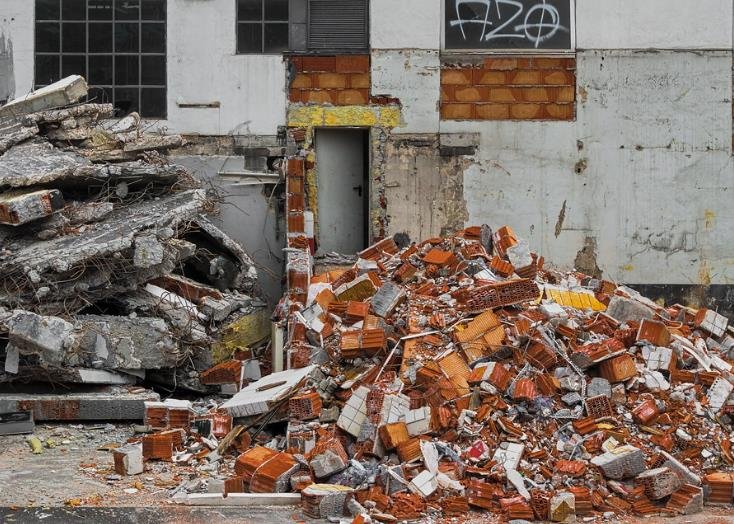Last week marked a significant milestone for New York City as the City Council gave the green light to the Adams Administration’s ambitious ‘City of Yes’ housing vision. This bold plan aims to introduce 80,000 new homes over the next 15 years, addressing the long-standing affordability crisis that has plagued the city for years.
“With this approval, we’re taking a giant leap towards making New York more inclusive and affordable for everyone,” Adams declared during a press conference. The initiative is seen as a triumph for working-class New Yorkers who have struggled with rising rents and limited housing options.
Financial Backbone: A $5 Billion Investment
To bring the ‘City of Yes’ vision to life, the city is committing a hefty $5 billion in public investment. This funding is crucial for supporting the various components of the plan, ensuring that the new homes are not only built but also maintained to high standards.
Allocation of Funds:
- Affordable Housing Projects: $3 billion
- Infrastructure Upgrades: $1 billion
- Community Development Programs: $500 million
- Sustainability Initiatives: $500 million
This financial commitment underscores the city’s dedication to transforming its housing landscape and making sustainable living a reality for its residents.

Zoning Changes: Breaking Down Barriers
A key aspect of the ‘City of Yes’ plan involves several inclusionary zoning changes designed to streamline the development process and encourage more affordable housing options.
Major Zoning Reforms:
- Accessory Dwelling Units (ADUs): Simplifying the approval process for ADUs to increase housing density.
- Office Conversions: Facilitating the transformation of vacant office spaces into residential units.
- Removal of Parking Requirements: Reducing the need for extensive parking facilities to lower construction costs and promote eco-friendly transportation options.
These reforms aim to remove traditional obstacles that have hindered the development of affordable housing, making it easier for builders to meet the city’s housing needs.
Tackling the Affordability Crisis Head-On
New York City’s affordability crisis has been a persistent issue, with skyrocketing rents and limited affordable housing options pushing many residents to the brink. The ‘City of Yes’ plan is a direct response to these challenges, aiming to provide relief and create a more equitable housing market.
“It’s about giving people a fair shot at living in the city they love without breaking the bank,” Adams emphasized. The initiative seeks to ensure that affordable housing is accessible to all, regardless of income level, by increasing supply and implementing fair pricing strategies.
Community Reactions: A Mixed Bag
The approval of the ‘City of Yes’ plan has sparked a variety of reactions across the city. While many celebrate the potential for increased affordable housing, others express concerns about the implementation and potential impacts on neighborhoods.
Voices from the Community:
- Supportive Resident: “Finally, something is being done to make living in New York more affordable. This could be a game-changer for so many families.”
- Concerned Neighbor: “I hope these new developments respect our community and don’t just add more high-rises without considering the existing character of our neighborhood.”
These diverse opinions highlight the complexity of urban development and the need for thoughtful execution to balance growth with community preservation.
Underlying Factors Influencing the ‘City of Yes’ Plan
The New York Times recently delved into the factors that paved the way for the approval of the ‘City of Yes’ vision. Several key elements contributed to this decision:
- Economic Pressure: The high cost of living and limited affordable housing options have put immense pressure on both residents and the city government to find sustainable solutions.
- Political Will: Strong leadership from the Adams Administration and a unified City Council were instrumental in pushing the plan forward.
- Community Advocacy: Grassroots movements and advocacy groups have tirelessly campaigned for more affordable housing, influencing public opinion and policy decisions.
- Innovative Approaches: Incorporating modern urban planning strategies and sustainable building practices made the plan more appealing and feasible.
These factors collectively created an environment where the ‘City of Yes’ plan could gain the necessary support and momentum for approval.
Implementation Strategy: Ensuring Success
With the approval in place, the next step is effective implementation. The city has outlined a comprehensive strategy to ensure that the ‘City of Yes’ vision is successfully executed.
Key Steps in Implementation:
- Collaborative Partnerships: Working with private developers, non-profits, and community organizations to build and manage new housing projects.
- Regulatory Support: Streamlining permitting processes and providing incentives for builders to prioritize affordable housing.
- Sustainability Focus: Incorporating green building practices to create energy-efficient and environmentally friendly homes.
- Monitoring and Evaluation: Continuously assessing the progress of the projects to address any challenges and ensure objectives are met.
By following this structured approach, the city aims to overcome potential obstacles and achieve its housing goals within the stipulated timeframe.
Economic and Social Impacts: Beyond Housing
The ‘City of Yes’ plan is expected to have far-reaching economic and social impacts on New York City. Beyond providing affordable housing, the initiative aims to stimulate the local economy and enhance the quality of life for residents.
Potential Benefits:
- Job Creation: Construction and related industries will benefit from increased demand, creating jobs and boosting the economy.
- Community Revitalization: New housing developments can revitalize neighborhoods, attracting new businesses and services.
- Social Equity: Providing affordable housing contributes to greater social equity, reducing disparities and fostering a more inclusive city.
- Environmental Sustainability: Sustainable building practices help reduce the city’s carbon footprint and promote eco-friendly living.
These benefits highlight the multifaceted advantages of the ‘City of Yes’ plan, emphasizing its potential to transform the city in numerous positive ways.
Looking Forward: The Path Ahead
As New York City embarks on this ambitious housing initiative, the eyes of the nation are watching closely. The success of the ‘City of Yes’ vision could serve as a model for other cities grappling with similar affordability challenges.
Adams expressed optimism about the future, stating, “This is just the beginning. We have a long road ahead, but with the support of our community and dedicated partners, we can make this vision a reality.”
The next 15 years will be crucial in determining the impact of this plan. With careful planning, community engagement, and unwavering commitment, New York City has the opportunity to lead the way in creating a more affordable and sustainable urban environment.















